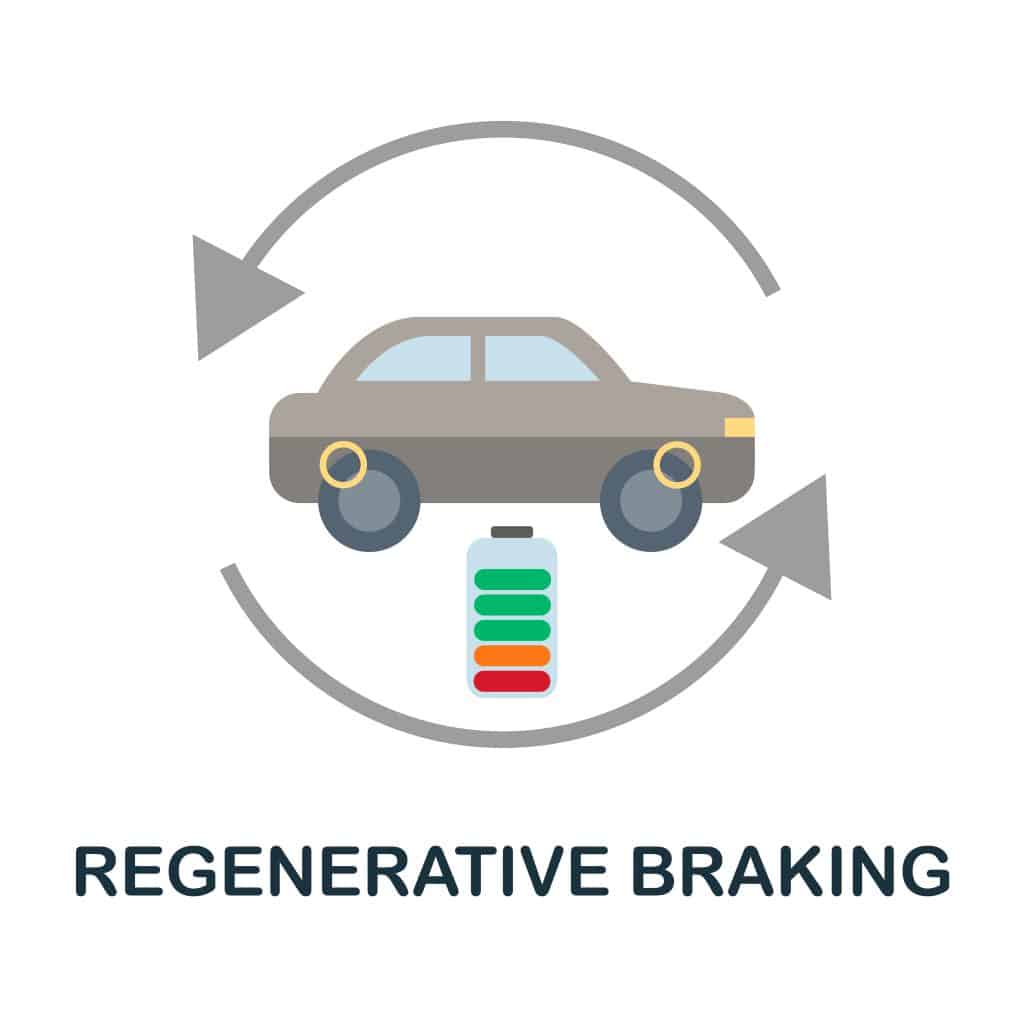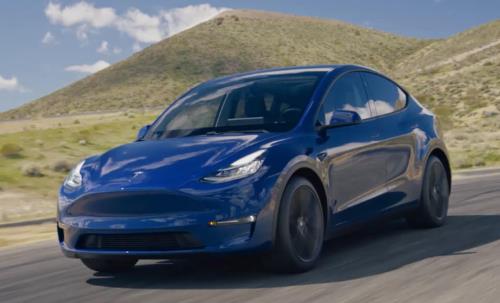Even as the single-charge range of electric cars steadily increases and begins to rival even that of some gasoline cars, the problem of range anxiety and uncertainty over charging persist in the world of EV sales. Still there are many who wait on the sidelines for the magic news to arrive that an EV can charge itself on the road and there’s no real need for any charging infrastructure to be used at home.
Perhaps one day such a thing will be a reality. As we continue to develop induction charging solutions built into the roads or set underneath our parking spaces and even in our home garages, the idea of plug-in charging is conceivably something that can be changed in the near future for EVs.
Some have pointed to other interesting solutions, however, including making use of the car’s regenerative braking technology. This will be the subject of today’s blog.
Can Teslas and other EVs charge themselves by simply coasting downhill?
Background: How Would This Work?

The idea behind this is very simple and takes advantage of the way in which regenerative braking works to recover electrical energy whenever the driver takes their foot off the gas pedal.
When the car is atop a slope and starting to go down, the driver lets go of the gas pedal and simply allows momentum and gravity to take over. As it does, the regenerative brakes start to kick in and start moving kinetic energy into reversing the motor, which then channels kinetic energy back into the battery where it becomes electrical energy.
On a regular road surface, the regenerative brakes in many cars like the Tesla Model 3, for instance, would bring you to a halt. With the help of downward momentum of a slope, however, this doesn’t happen, especially if you have enough speed.
With the regen working almost continuously, many claim that it actually puts power back into the battery so you can end up with more power at the bottom of the hill than when you started coming down.
Does this really work? There have been some prominent Tesla fans on YouTube who have given it a try and found positive results, like “Tesla Joy” for example in this video where she notices a bump in her battery from 77 to 78 percent upon descending a slope with regen braking in Palm Springs, CA:
Another YouTuber, “Vincent Stahl” tried running his Tesla along a 2.5-mile downward road with the aim of seeing how many extra miles he could charge into his car in those 2.5 miles:
When he set off, the on-board computer estimated that the Tesla had about 148 miles of range remaining. At the end of the 2.5 miles, he found that the computer said that there were 151 miles of range still available, indicating that enough regenerative power had gone into the battery to actually increase his range. That indicates a net gain, doesn’t it?
Do EVs Really Charge Going Downhill?

Technically, yes EVs do recharge their electric battery when going downhill. The mechanism of regenerative braking if used in a continuous manner will indeed flip the motor into reverse, channelling at least part of the kinetic energy into the battery where it will become electrical energy for the battery. The real question is whether or not this technical fact justifies saying: “My Tesla can ‘recharge’ itself going downhill.”
In reality, while the technical truths behind the claim cannot be disputed, none of the demonstrations thus far — including those we linked above — demonstrated any more than a marginal increase in power. Furthermore, it is yet to be demonstrated that the increase in power going down the selected slopes were net gains when you factor in the amount of power used to drive to the top of the slope in the first place.
Driving uphill requires more power than driving on a flat slope. The fact that you can recover some of that power is certainly one of the most amazing and appealing things about EVs. After all, once you’ve burned away your gasoline going up a hill, no amount of downhill coasting is going to bring that gasoline back.
Not even one atom of gasoline can be recouped, so even if one only recoups a percentage of what was last, it still works in favor of EVs overall.
One discussion forum on ChevyBolt.org saw a story of one Bolt owner taking his EV from Santa Fe to Los Alamos, NM. He noted his recordings from the range estimation gauge (REG) thusly:
“I recorded the high range prediction after the long downhill out of Santa Fe: 461 miles. I drove up to Los Alamos, a long climb, then recorded the high range estimate about 20 miles later after coming back down to the low point (the Rio Grande): 420 miles. So adding the 20 miles traveled it dropped from 461 to 440, and that included the very severe climb up to Los Alamos.”
ChevyBolt.org forums, pvevstv, 2017
From this, the Bolt owner came to believe that the regenerative efficiency of the regen brakes being 40 percent as they understood before might actually be a total underestimation of the real efficiency.
However, others in the forum were quick to point out that the REG in the Bolt is not an accurate measure of real range because the on-board computer makes the calculation while taking into account current driving conditions.
What this means is that as you’re driving downhill and the regen brakes might be working consistently, the computer sees it as simply tremendous and efficient driving on your part, and therefore miles get added to the REG.
It’s not to say that no electrical charge goes into the battery, because it has been shown by enthusiastic Tesla owners that it does indeed increase battery life, and we can confirm by looking at power readings in the Tesla that it has a positive effect.
The trouble is that the effect is too short-lived. Once driving conditions normalize, the computer will correct for the new conditions. What’s more, no hill or slope is long enough for you to coast down and charge the car the whole way. It would need hours and hours of coasting to make that happen.
So, Should EV Owners Stop Bragging About This?

If you have friends who drive Teslas or other EVs, you might have grown a bit sick of their constant blabbing about how their car can “charge itself” on the road. What they’re saying is technically true and there are many great things to be said for the technology behind regenerative braking.
Most notably, it is superior to the gasoline model in that it is capable of recovering even a little bit of your electrical energy and putting it into the battery. Not even a half-million-dollar supercar from the fanciest OEM in Europe can put gasoline back into your car — not one.
Therefore, the technology they’re boasting about is real, and the regenerative effects of the braking system are real, but saying that the car can recharge itself is currently still quite a major exaggeration.
We should all be excited at the possibilities of regenerative braking and how such technology can help EVs to boost range and help to eliminate the range anxiety that persists in many hesitant buyers. Even better, regenerative braking promises to make stop-start driving in busy cities far more comfortable by allowing drivers not to have to do a constant dance between accelerator and brake pedals.
Share in your EV-owning friends’ joy, but don’t be afraid to remind them that they’d be expending more energy climbing back up the hill each time to demonstrate the small amount of energy they were regenerating.